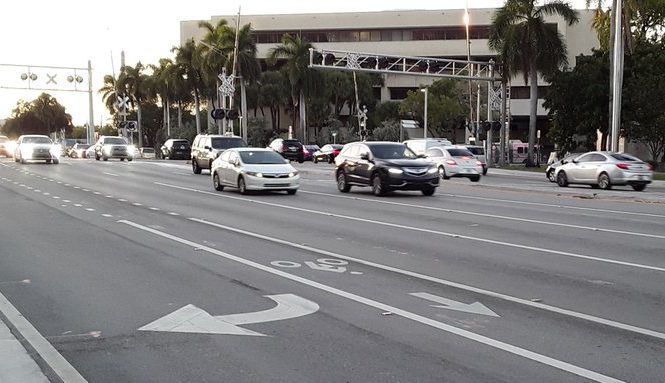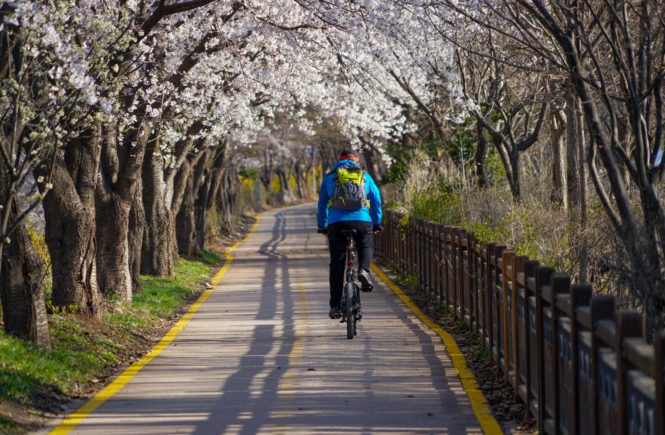I rented a car recently and took a road trip from Miami to Tampa and then Orlando. Driving is fun in limited amounts, with no traffic and open roads, but I wouldn’t want to make a daily habit of it. I was very impressed with St. Petersburg and Winter Park – they have some of the most walkable, interesting downtowns in the U.S. Winter Park’s downtown has effectively become a great transit-oriented development with the addition of Sunrail service connecting to Downtown Orlando.
I noticed an alarming trend during my road trip, though. There were a significant number of unprotected bike lanes striped on high-speed, state highway arterials throughout the state. At first I thought it was a fluke, a one-off project that someone had mistakenly approved, or perhaps a demo project. But then I kept seeing them on FDOT maintained arterials: Tampa, Clearwater, Orlando, West Palm Beach and random small towns throughout my trip. They often included mixing zones where cyclists were expected to merge with 50mph+ traffic. While I didn’t document all of them, here are a few I encountered. Note – these roads are far wider than they appear in the photographs.
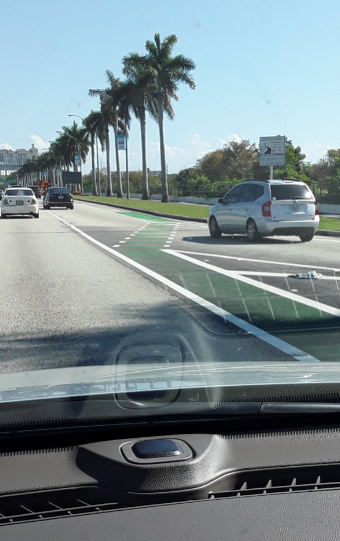
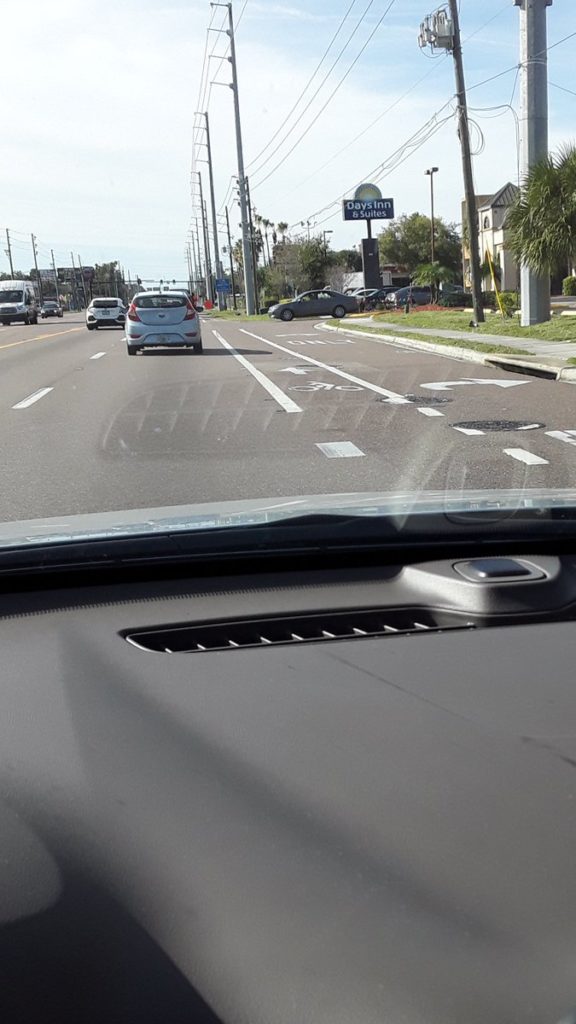
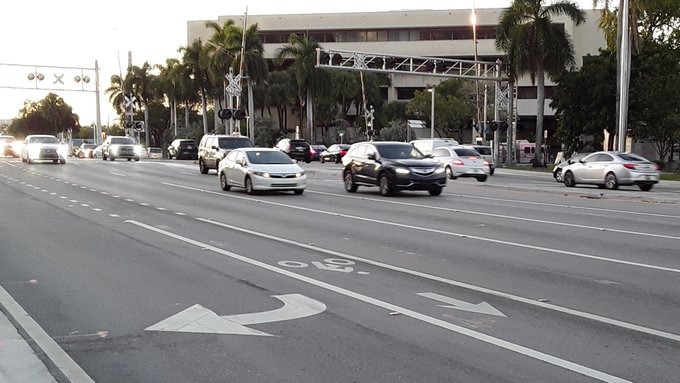
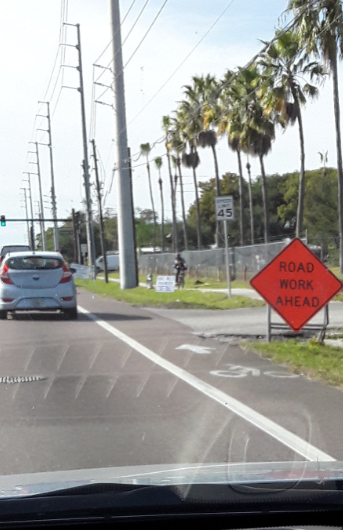
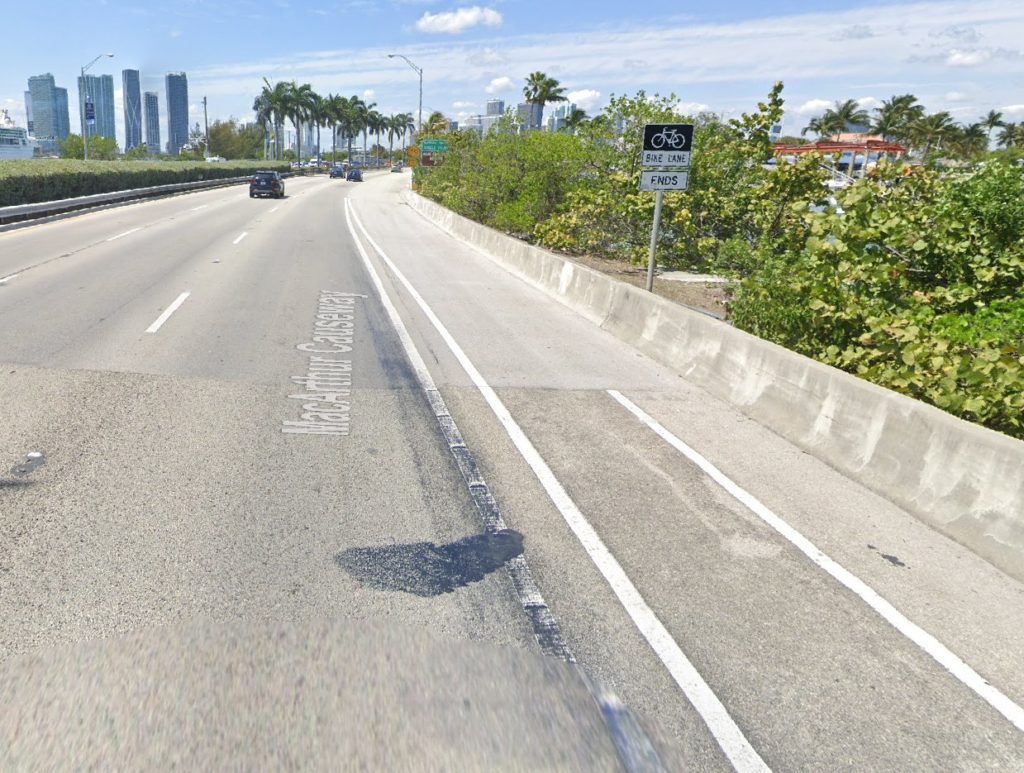
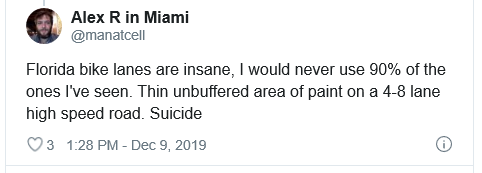
How many of you would ride on these? I thought so. Ideally, bike lanes should be low stress and provide a high level of comfort for cyclists – mixing bikes and 25mph traffic already poses a danger to vulnerable road users, so the more vertical protection, the better. When the speed differential between automobiles and cyclists exceeds 20mph without vertical separation, however, bike lanes go from being useful infrastructure to something dangerous and unnecessary. Speed limits on these roads range from 35mph to 45mph, but their design speeds seem much faster, and that’s the speed most drivers go on these arterials. Even more alarming are the mixing zones where people pedaling at 15mph are expected to merge with high speed traffic making turns onto and off of these arterials – and where drivers are probably not expecting to see cyclists on what is basically a highway. These bike lanes are dangerous for cyclists and automobile drivers.
How did these bike lanes come about? FDOT’s design manual provides some clues with this simple statement that starts their bike chapter.
Bicycle facilities are to be provided on all roadways on the SHS, except where its establishment would be contrary to public safety; e.g., limited access facilities as defined by FDM 211.
It appears most roads on the State Highway System are candidates for bike lanes, no matter how inappropriate they may be, and no matter how many lanes of traffic a cyclist has to navigate. I would argue, however, that the numerous bike lanes I’ve already seen striped on the State Highway System violate public safety. The manual goes on to say:
Bicycle lanes are the preferred bicycle facility type on curbed roadways with a design speed ≤ 45 mph.
Every road I showed above probably has an 85th percentile speed of at least 45mph, but apparently these 8 lane arterials don’t qualify as having design speeds of at least 45mph. How does FDOT’s design manual define “design speed”?
Design Speed: A principal design control that regulates the selection of many of the project standards and criteria used for design.
That’s not very clear. NACTO has better guidance on design speeds, and also shows an alarming trend. Speeds over 40mph are very deadly for pedestrians. It stands to reason this speed would be very deadly for cyclists as well.
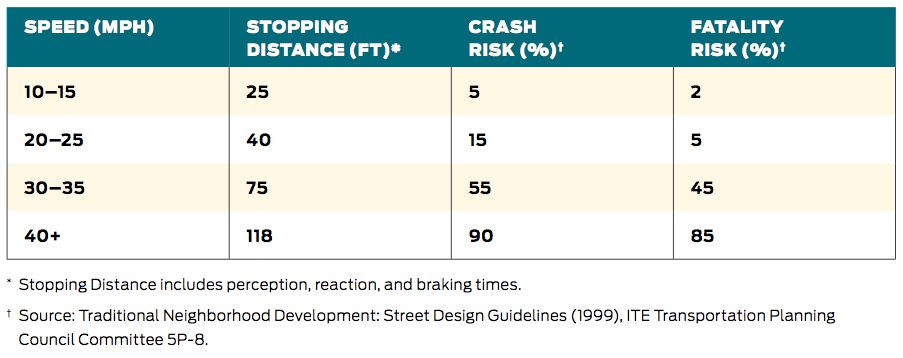
It also seems FDOT’s bike lane policy contradicts NACTO’s guidelines, which recommend protected bike lanes for streets with target speeds of greater than 25mph. And even if speed wasn’t an issue, the State Highway System has incredible traffic volumes which also puts cyclists in danger on these facilities.
Would the engineers who approved these bike lanes ride them? Would they let their families ride them? I’m guessing no way in hell. Bicycles are not vehicles and should not be treated as such. People who ride bikes don’t have the luxury of 2,000 pounds of protection surrounding them, nor the speed to safely mix with automobiles going in excess of 40mph. Designing bicycle infrastructure as if cyclists behaved like automobiles is not only foolish, but deadly.
These bikeways also completely ignore the context of the roadway and surrounding land uses. Why would a cyclist use the State Highway System that’s mostly dominated by auto-oriented uses, sparsely populated low-density residential development and farmland? Local and collector streets, even without bike lanes, would be far safer, have more bike trip generators and probably more direct routes. Are these bike lanes for cross country cyclists instead? Or perhaps e-bikes with higher operating speeds? Maybe they’re actually scooter lanes. It’s baffling. I’ve never seen infrastructure design choices so divorced from reality.
It appears FDOT is putting in these facilities so they can say they’re doing something for multimodal access and safety. It’s a great way to check off a box on a “complete streets” checklist. Unfortunately, these facilities are a step backwards and can easily turn the public against bike infrastructure. In a state that is #1 for pedestrian fatalities, with a significant number of fatalities across all modes occurring on state-maintained arterials, there are numerous things FDOT should be doing to improve safety. And I’m sure FDOT’s intent is well meaning and that they’re making progress in other areas, but putting paint on highways encouraging mixing of vulnerable slow modes with well-protected high speed modes is not the way to address safety or complete streets.
So Dear FDOT: Not every road needs a bike lane – and high speed arterials especially don’t need unprotected bike lanes. This isn’t how bike infrastructure works. Please stop this madness before we read about more cyclists and drivers getting killed because someone thought it was a good idea to put bikes in highway traffic.

